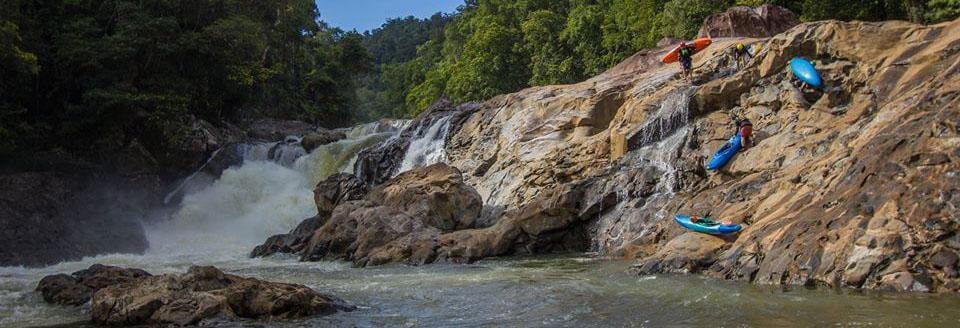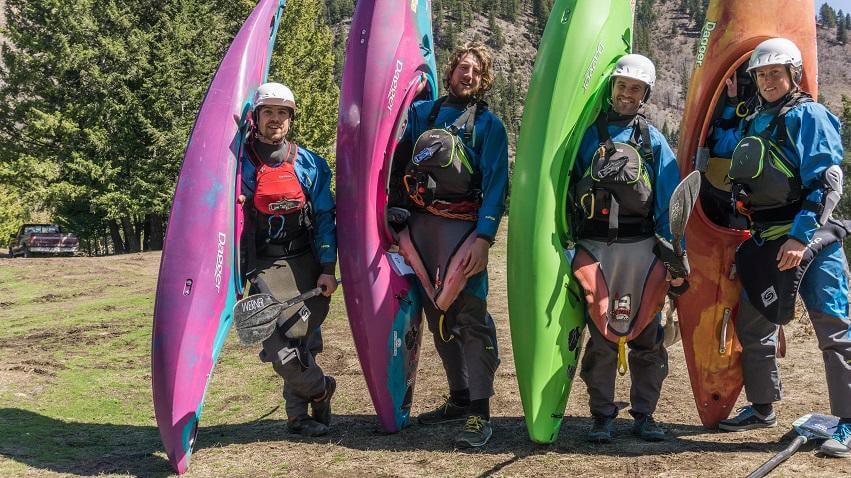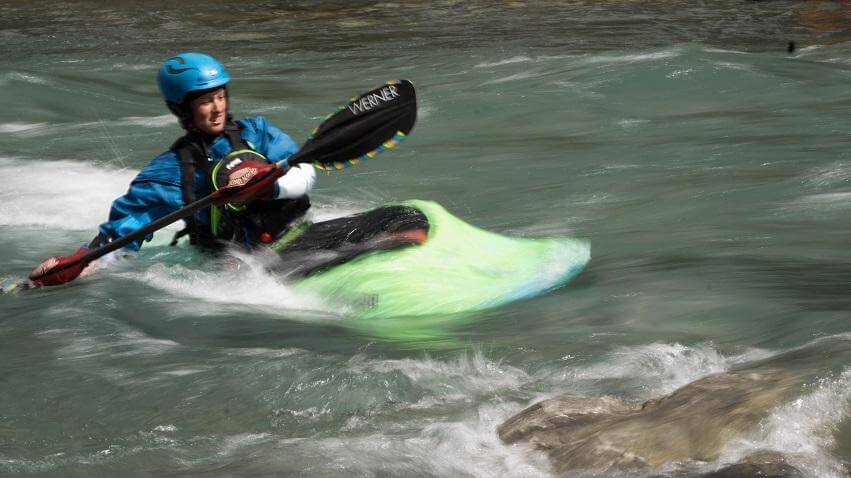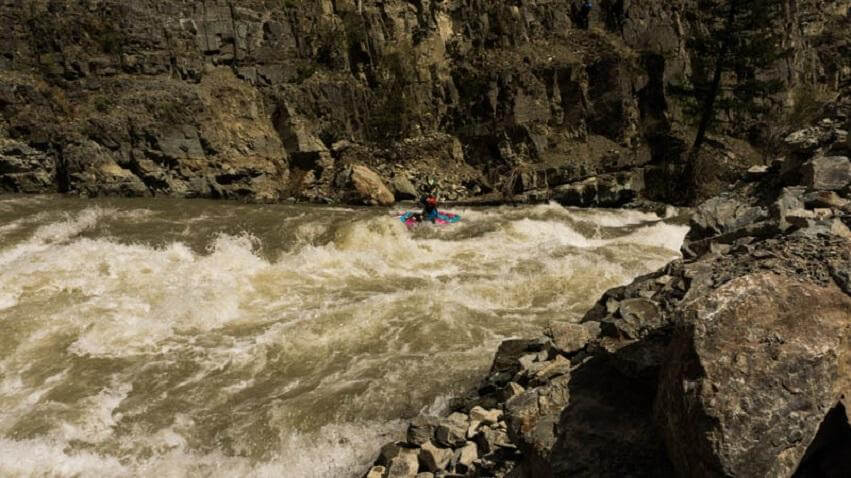Words By: Simon Coward
Every time our spring is late like this, I have way too much time to think and contemplate kayaking rather than to actually go kayaking. My brain wanders all over the kayaking map. Sometimes I come up with interesting ideas though. Well, I decided I want to share some of them.
This idea was formulated from a couple avenues. First I was thinking about how to best describe to my students, the process of reading and running rapids and general advanced river running techniques. Secondly, I was thinking about the grading system and all of its woes. After writing a blog at least 4 different times and scrapping them all, this emerged. I might not be in a field where I use very much of my science school education, but all those years in calculus and physics has taught me that systems and structure are useful building blocks when trying to understand complex subject matter. So, here is my attempt at bringing some sort of structure into this abstract paddling world.

I always knew that more experienced paddlers had more hard skills when it comes to getting themselves down a particular piece of whitewater. Boofing, rolling, bracing, steering etc. However, they also possessed skills of a more elusive nature. How to run a NEW river they had never seen before, with style and without a gong show. This is what I have come to know as the art (or science) of Exploratory Boating.
Just like the electromagnetic light spectrum, I am going to set up a spectrum of river running techniques (fair warning, this has not been peer reviewed or entered in a scientific journal). There is inherent risk in all paddling endeavors, this scale is simply meant to express the extra risks that can be present depending on the technique used. It looks something like this.

So, we now have a structure, lets figure it out. I’m gonna have to use some real(ish) world examples to get this across.
Blind: Picture buddy Joe-Cartier Blow, who owns an explorer 200 and is on vacation from Quebec. He is travelling through Invermere, BC and see’s that there is a river called Toby Creek. He stops his car, inflates the explorer and hops on the river for a nice afternoon float. He has not heard about the 7 canyons of class V that awaits him downstream.
Blind led by Blind: SUPer Man also happens to be passing through the area and is intrigued to see Joe-Cartier Blow pumping up his explorer and decides he will follow him down on his rubber ducky. He is at a slight advantage to Joe Cartier as he can watch Joe’s progress and has a split second longer to make a decision if things start going south for Joe.
Blind Faith: A random group of rafters have heard that the run is grade IV from a hot shot friend so they come with a rental from the U of C hoping to route everything.
Aggressive Boat Scouting: A group of gnarly kayakers has heard Toby is a “fun” run with some “hard” rapids and it can be run in 2.5 hrs. They have a guy named Bill who is notoriously good at probing rapids. They put on 2.5 hrs before dark. (Toby can take up to 6 hours for first time groups).
Guided Blindness: A kayaker knows there is a good class II-III section on the Toby somewhere, maybe they have even paddled it eons ago. They decide it would be a great spot to introduce their partner to the sport. However they get the put-in wrong. The Partner fully trusts the kayaker, but is still scared for some reason…..
Informed Aggressive Boat Scouting: Another group of Gnarly kayakers has heard Toby is a grade IV+ run, it is high and has a couple bigger rapids to worry about including a class V+ rapid at certain levels. They also hear there is a log in the second canyon to be warry of and that it could take them longer than 2.5 hrs the first time down. They give themselves all afternoon, but do not scout any of the canyons prior.
Alert Follower: A good C1 paddler is following a kayaker friend down Toby. The kayaker knows the way, but has sandbagged the C1 paddler a bit. The C1er is following the kayaker for the most part, but is keeping an eye out for eddy’s to stop in, they get to a rapid that the C1er isn’t happy with and decides to attempt a portage (that is almost sketchier than the rapid).
Exploratory: A group of packrafters wisely go home after scouting the canyon from the rim.
So I am hoping these examples give you a starting point for thinking about the differences. Of course it needs to be noted that the different techniques hold a spot on my risk scale dependant on specific factors. If these factors are reliable the position holds true.
CHANCE OF SUCCESS IS RELIANT ON:
Blind: Luck, Personal Paddling Skills
Blind led by Blind: Luck, Paddling Skills of Blind person in front of you, Personal Paddling Skills
Blind Faith: Validity of Beta, Personal Paddling Skills, Luck
Aggressive Boat Scouting: Boat Scouting, Roll of the Dice on Probed Rapids (short period of calculated Blindness), Paddling Skills, Luck
Guided Blindness: Guides River Running Techniques and Judgement, Personal Paddling Skills, Luck
Informed Aggressive Boat Scouting: Boat Scouting, Roll of the Dice on Probed Rapids (short period of calculated Blindness), Beta, Paddling Skills, Luck
Alert Follower: Guides River Running Techniques and Judgement, Boat Scouting, Personal Paddling Skills, Luck
Informed Alert Follower: Guides River Running Techniques and Judgment, Boat Scouting, Personal Beta, Personal Paddling Skills, Luck
Exploratory: Thorough Shore Evaluation Prior to Commitment with Personal Judgement, Boat Scouting, Personal Paddling Skills, Luck
There are some things here I would like to highlight.
- The first is that up to and including Guided Blindness, all of the techniques are reliant on one factor and if that particular factor fails, a paddler is then basically proceeding blind. If your Beta is no good, you go from Blind Faith to Blind. If you are ineffective at boat scouting, you go from Aggressive Boat Scouting to Blind. If your guide is unreliable you go from Guided Blindness to Blind. This is why I consider these techniques to be riskier.
- The term “Guide” is anyone who is leading the pack.
- I fit memory of a run into an advanced form Blind Faith. You might have paddled the run yesterday, but if you bomb down the run today, you are doing so on faith that a) you remember it all and b) nothing has changed.
- Blind Faith operates on information from the past, where the higher techniques involve processing present information.
- When using Guided Blindness, a guide is held to the same rules, so if a guide is using Blind Faith, than technically so are you.
- Aggressive Boat Scouting and Blind paddling resemble each other very closely, however there are subtle differences between the two that account for a drastic change in risk. This subtle difference is a tough thing to teach, but very important. I will likely write a blog aimed directly at this topic.
- Exploratory Paddling can be accomplished without any Beta whatsoever with minimal extra risk. It can be very time consuming though, so Beta is useful to point you to the right river and to speed up the process.
- It is not necessarily always the case that only one of the techniques is used for the whole river run. Quite often the technique used changes from rapid to rapid, even move to move.

I am going to leave you with these ideas to mull over while we wait for our rivers to melt. I would ask that you do some thought experiments yourselves. Think back to last summer and try to point out the different techniques that were used, especially those days that were on new rivers or that went really well or really poorly. Look deeper at the factors you were relying on and whether or not those factors were actually reliable or if it was just luck and paddling skill that got you down. Hopefully in doing so, this will help you get on track to paddling new rivers with style and minimize the gong show.
Brandon Willms, Self-Proclaimed Whitewater Philosopher







